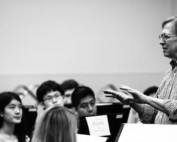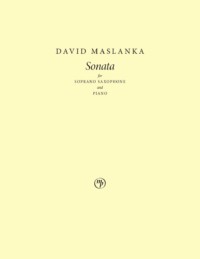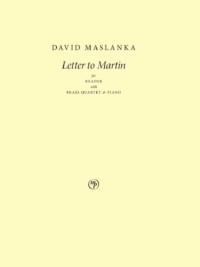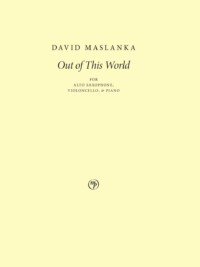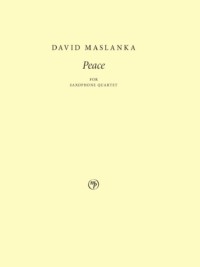Project Description
Violin, Clarinet in B♭, and Piano
1971, rev. 2012
13 min.
Listen Now
Verdehr-Renner Trio
On the album David Maslanka: Trio No. 1 (1971)
Peggy Dees, Clarinet
On the album David Maslanka: Trio No. 1 (1971, rev. 2012)
Movements
- I
- II
- III
- IV
- V
Program Note I
Forty years after writing this Trio I am able to see its relationship to composers of the mid and early 20th century such as Crumb, Messiaen, Webern, and Bartok, and back further to Chopin and Bach. The five movements are internal, whispery, and sometimes suddenly surprising. They are little ‘postcards’ from the psyche. I took the opportunity in revising the piece to give my younger self a composition lesson, amplifying expressive values, and filling out melodies that had more to say.
- Maybe your introduction to a quiet and withdrawn fellow who doesn’t meet your eye.
- Passacaglia – a throwback to the Baroque, but more in line with miniatures by Webern.
- A kind of time travel with roots in Bach, Chopin, & Webern
- The 1970s idea of ‘tonality in quotes’ – reference (with longing!) to the old tonal style. It was at this point in my composing life that I began to question the use of irony in music, to realize that I was searching for the heart center, and that for me it lay in tonality and singing melody.
- Fanfare and scherzo: skittery and flittery, a brush of moth wings against the face. This is the largest and most developed movement, acting in some ways as a summary for the whole piece.
Program Note II
The five movements of this Trio are terse, interior, and enigmatic. They contain the seeds of things that have occupied me over the years since: a preference for tonality and singing melodies, and a way of collecting short movements to tell a larger story. I think my historical reference is to the string quartet pieces by Schoenberg and Webern, which in turn have their roots in nineteenth-century song cycles.
Note to the Performers
This music makes very exacting demands in every detail. If you are as patient as you can be in your practice then the music will achieve a kink of fleeting glow. Pay as careful attention as possible to tempos and dynamics.
Further Reading
David Maslanka: Works for Younger Wind Ensembles
Here are more than twenty works for wind ensemble, arranged in approximate ascending order of difficulty, with commentary by David Maslanka
Recording the Wind Ensemble Music of David Maslanka
Mark Morette of Mark Custom Recording shares his extensive experience in recording wind ensembles.

